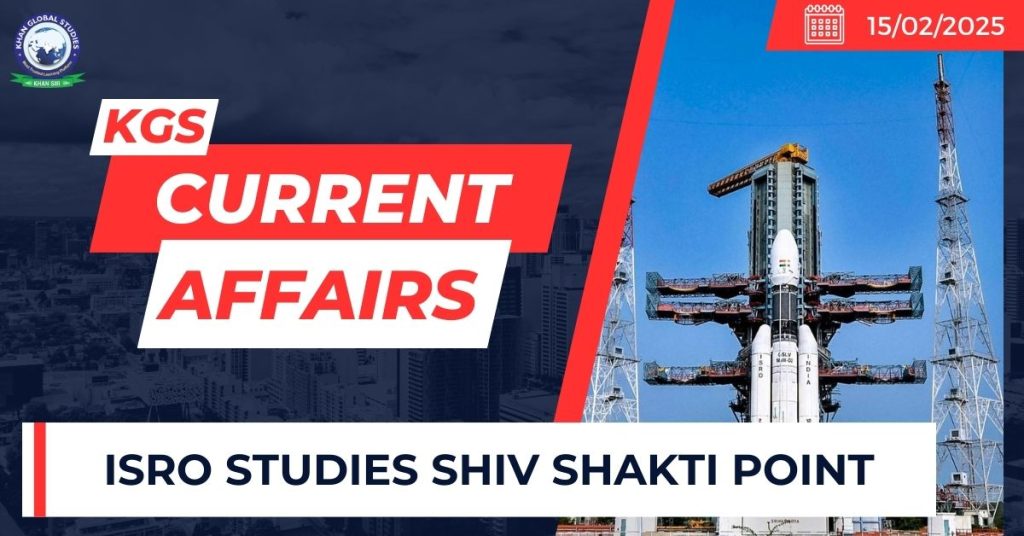Context:
Recently, a study by scientists of the Indian Space Research Organisation (ISRO) has estimated the age of Shiv Shakti point to be around 3.7 billion years.
Key Highlights of the Study
This age coincides with the period when primitive microbial life first emerged on Earth.
- Primitive microbial life refers to the earliest form of the microscopic organism that existed on Earth.
A team of scientists, including those from ISRO’s Electro-Optics Centre in Bengaluru, Physical Research Laboratory in Ahmedabad and Panjab University in Chandigarh, has created the first geological map of the Chandrayaan-3 landing site (Shiv Shakti Point).
Scientists have used high-end imaging techniques such as the Lunar Reconnaissance Orbiter (LOR) wide-angle camera, to gather rock distribution data from the lunar surface around Shiv Shakti point.
The geological map reveals the spatial distribution of three distinct terrain types within the landing area
- High-relief rugged terrain
- Smooth plains
- Low-relief smooth plains.
- Geological mapping is a fundamental process of organizing different datasets into geological units.
Based on morphological data, the ISRO scientists concluded that the local area around the landing site was mainly formed by the ejecta of secondary craters, specifically Manzinus and Boguslawsky craters.
Shiv Shakti Point
Chandrayaan 3’s moon lander landing site was named Shiv Shakti Point in August 2023 by the Prime Minister of India.
In 2024, the internationally recognised body for the nomenclature of celestial objects, the International Astronomical Union (IAU) Working Group approved the name ‘Statio Shiv Shakti’ for the landing site of Chandrayaan’s Vikram lander.
It is a compound word from Indian mythology representing the masculine (“Shiva”) and feminine (“Shakti”) duality of nature.

It is surrounded by three large craters:
- Manzinus to the north (3.9 billion years)
- Boguslawsky to the southeast (4 billion years)
- Schomberger to the south (3.7 billion years)
Chandrayaan 3
It was launched on July 14, 2023, on a Geosynchronous Satellite Launch Vehicle (GSLV) Mark 3 (LVM 3) heavy-lift launch vehicle from Satish Dhawan Space Center in Sriharikota, Andhra Pradesh.
As a follow-on mission to Chandrayaan-2, its primary objective was to put a lander (Vikram) and the Rover (Pragyan) in the highlands near the south pole of the Moon and demonstrate end-to-end landing and roving capabilities.
- Chandrayaan 2 was launched in 2019 from Satish Dhawan Space Center, Sriharikota on a GSLV Mark III to demonstrate the ability to soft-land on the lunar surface and operate a robotic rover on the surface.
With the success of this mission, India became the fourth country (after the USSR (now Russia), the US and China) to achieve a soft landing on the lunar surface and the first to reach the Moon’s South Pole.

